Street Children Photography Project: behind the scenes
Transitions’ collection of photographs represents eight turbulent months of trial and error, challenge and experimentation, triumphs and catastrophes.
The Transitions Catalogue brings you the images, anecdotes, blog and newsletter clippings that highlight turning points and successes in the project, from unpredictable early days of large, wavering groups and snapshot photography to the closing months of dedication from the individuals whose photographs make up this exhibition.
The Street Project
In order to make regular and successful contact with children and teenagers living on the street, the “disposable camera” project stage evolved and adapted over time. Despite (un)foreseen variables bringing fluctuations to its progress, the original idea prevailed: providing photography workshops and disposable cameras to street children, allowing them to articulate their stories and thoughts.
“The smell is the first thing that hits a person coming in from the outside; bodily odours, dog odours, damp, human waste and solvents.” (September blog entry)
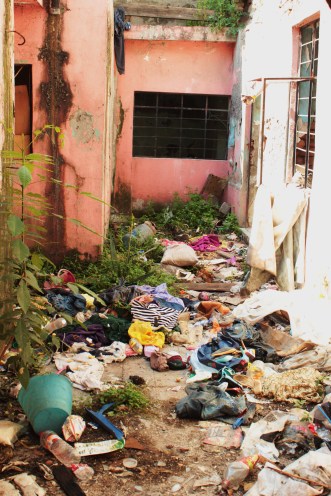
First outing with the Casa Alianza Street educators in early September, 2012. In my diary I made bullet points of other things among the rubble that had struck me ; coca cola bottles, rubric’s cube, books, shoes, belts, remains of toy railway, lollipop stick.
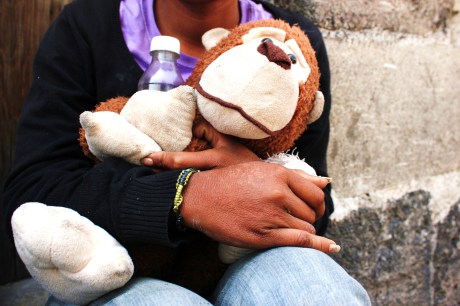
Laura, 19, and her Changito (Little Gorilla), he doubled as a huggable comfort and a stuffed mule for her glue. Quote from my diary: her hands were wrinkled, dry and peeling with dirty, long fingernails. The age of street children always confuses me. I think they’re years younger than they are. When they’re not high they have big eyes that sparkle. Their hands always give it away. Sometimes they’re eyeballs are yellow.
“Whether or not David and Martín will commit to the project is not certain, but I’ve learnt that sharing a camera does break the ice…” (December blog entry)
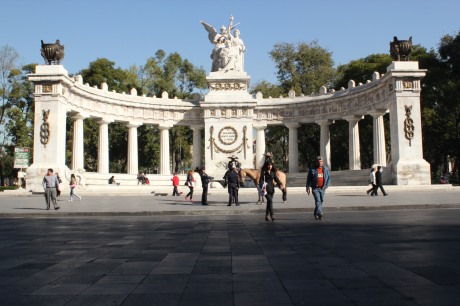
Monument to Benito Juarez, Historic Centre, Mexico City, by David on our first outing with a professional camera. After two sessions David gave up on photography. He lost the disposable camera.
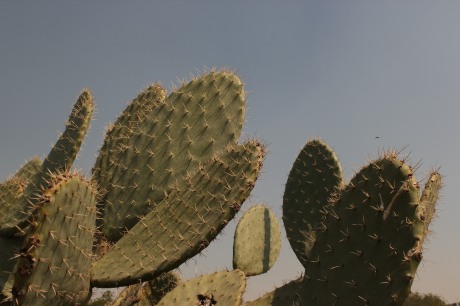
Nopales by Eric, a Honduran boy deported to Mexico from the USA. We only took this one session together before he disappeared.
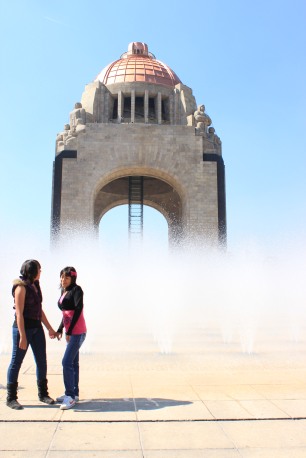
5. Monument to the Mexican Revolution by Martín. Martin was the first teenager I gave a disposable camera to because he showed a lot of potential during this session. I never saw him again.
“After some time, he ventured to ask me, ‘Where are you from?’
‘England,’ I replied, ‘Do you know where it is?’ He shook his head, although, funnily enough, I noticed he was wearing an Inglaterra t-shirt. The bus arrived.
‘Do you miss your home?’ He asked me.
‘Sometimes.’
‘Me too, I miss my home sometimes.’
A silence ensued as we got on the bus, both contemplating our respective homes, although the situations that had got us there couldn’t have been further apart.” (December blog entry)
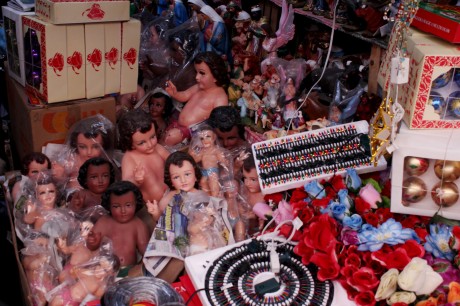
A trinket stall outside the Basilica, by Andrés Brayan. Andrés Brayan lost the disposable camera over the Christmas period. We lost contact.
“Her mother was still beating her 12 and 16 year-old sisters, especially for wearing make-up. David [the street educator] told her that she had to live for her own daughters -she had left them with the woman who beat her up. He told her that her self-esteem could only come from herself, not from her boyfriend, nor anyone else.” (January diary entry)
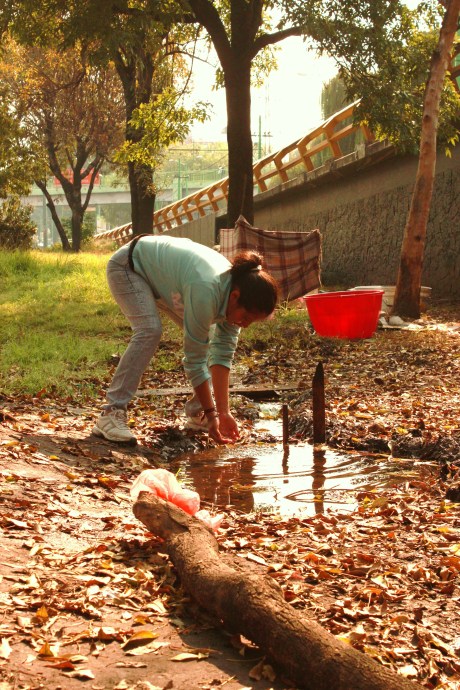
Fabiola prepares to leave her home under the bridge for six months in rehab. She completed the course and six months later we met a new girl. We accompanied her across the city to look for her aunt. Her aunt had moved house long before.
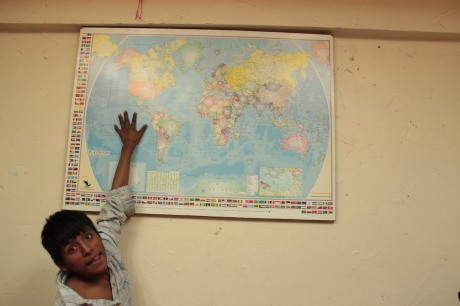
Rosalindo points out Mexico on a wall-map in an Irish-Catholic run rehab centre in Mexico City. These pictures were taken to be sent off to the Centro Cultural de España as first-edit photograph exhibits.
“I decided I could do with the exercise of walking and fought my way off [the metro], heading this time for a different exit. I hurried past a pair of boys huddled together in the corner of the stairs. ‘Ale!’ I ignored it. ‘Ale! I have your camera!’”(February blog entry)
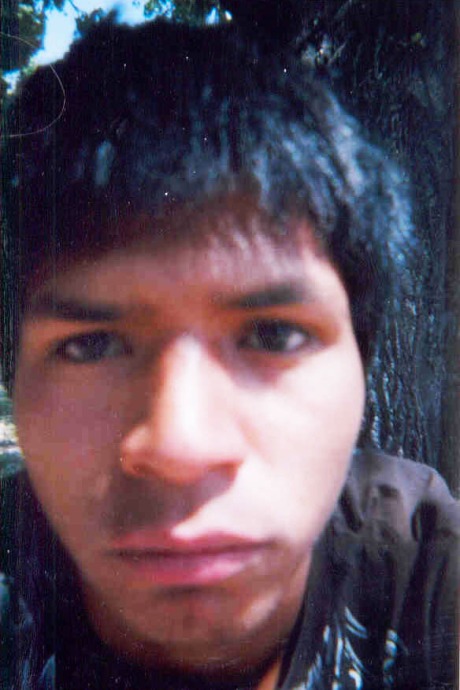
Self-portrait by Miguel Ángel, taken around five months after he left the Casa Alianza residence. He was the first street child to successfully return a disposable camera.
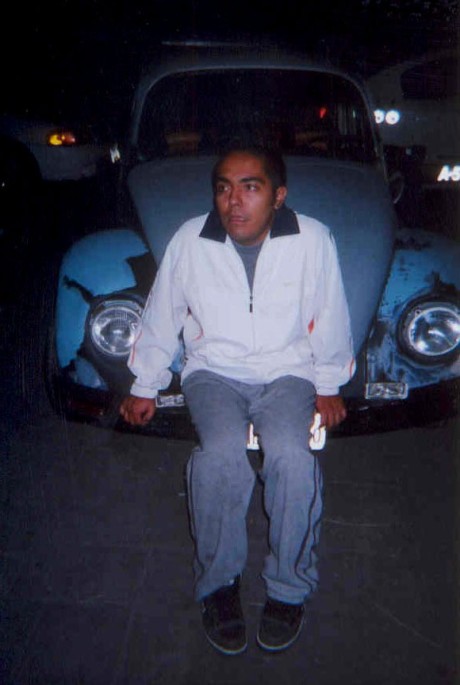
Edwin by Miguel Ángel. After spending time around Miguel Ángel, Edwin would later approach me asking for his own camera.
“Itzel peeled away from the fence a simple photograph of a green cactus against a bright blue wall. ‘Why have you picked that one, Itzel?’ Mauricio asked. Itzel didn’t hesitate to reply, ‘Because,’ she said, smiling, ‘it reminds me of my home. Lots of flowers everywhere, loads of colours, nice smells and the warmth.’” (February blog entry)
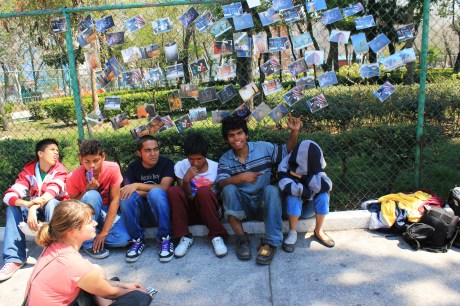
Enter Mauricio Palos. Mauricio assisted me in running workshops on the street over three weeks. This was the first session in which we got the participants to engage with images and the public through offering them picture postcards displayed on the fence.
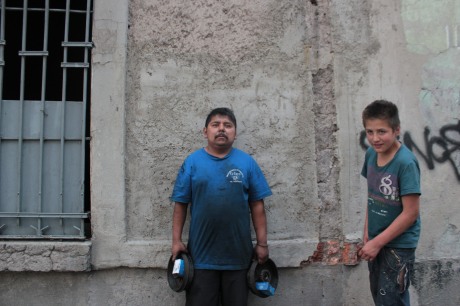
Portrait of a car mechanic, Guerrero, Mexico City by José. The boy in the photo, age 12, I only knew by his street name, el Güero (White Boy). Mauricio and I did one session with these boys, but whenever we saw them thereafter, they were not sober enough to continue.
“She pored over those photography books, savouring every image; when she spoke about them, she spoke of religion, poverty and the human condition. If anyone knew of these things, it was she.”(March blog entry)
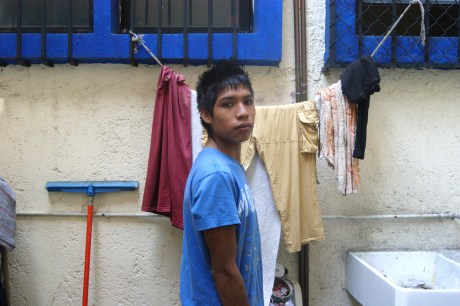
Javier by Mauricio Palos. The day that Javier joined the impromptu photography work shop in the Casa Alianza headquarters.
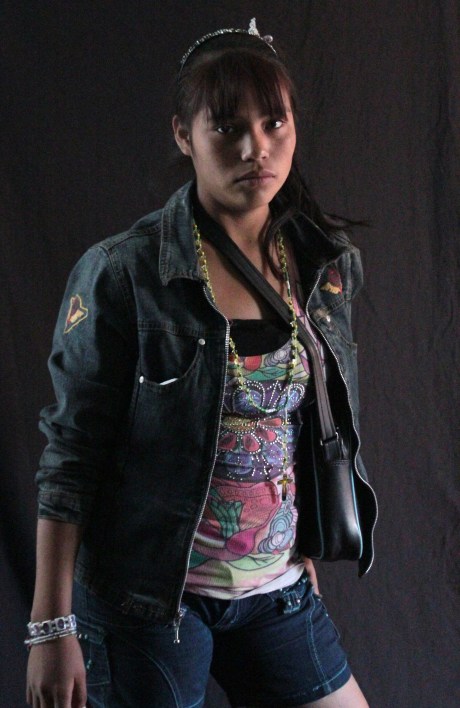
Catarina by Fracisco Javier. Catarina was the only girl to ever show an interest in the street photography workshop. She took the disposable camera and never came back.
The Home Project
This part of the project was aimed at children who were living in the Casa Alianza homes who would be able to participate on a weekly basis using digital SLR cameras. Several months were taken with the groups varying. After testing the waters with studio excursions, indoor and outdoor photography activities, gallery visits and photographer presentations, it was not until after Christmas, and a total rearrangement of the project’s structure, that the final groups came together. Finally, an intimacy developed that had been absent from the previous groups.
“Two of the boys had managed to do a DIY job of smashing open the cameras to take out the film roll. Luckily, no photos were harmed during this process.” (October newsletter)
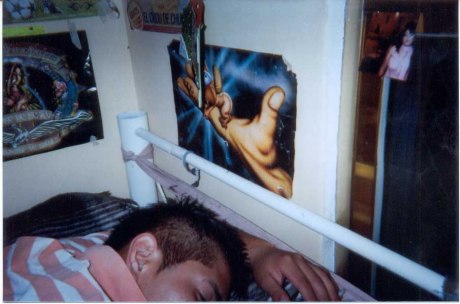
The Bedroom by Eduardo. From the first set of disposable cameras I handed out to the boys in the home.
“My second enlightenment came when I met the children living at the Casa Alianza home; I couldn’t believe that they had come from that same world. They’re smiley and chatty; they’re healthy, energetic, enthusiastic and, to my greatest surprise, they bear not a grudge.”(September blog)
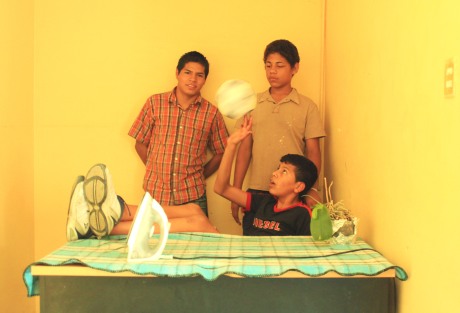
Getting to know the boys. Clockwise from left: Miguel Ángel, Nelson and Jose in the early days in the home. They all went back to the street. Jordan returned before I left.
“Miri… What do you think we need to look for before we take a photograph?”
Miri shook her head and shrugged her shoulders. Then she lit up, “La cámara!” (October blog entry)
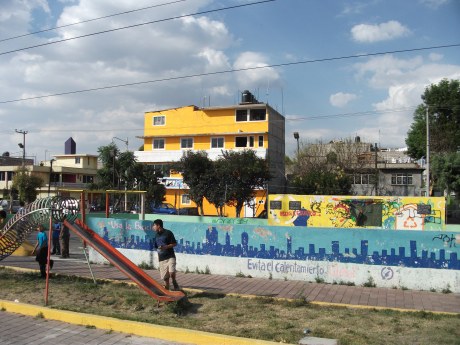
The Playground by Eduardo. Eduardo continued with the workshop throughout and his work is exhibited.
“Today I am over the moon; we have cameras… I know that because an actual physical exchange of a cheque and a receipt took place and I was witness to it.” (November newsletter)
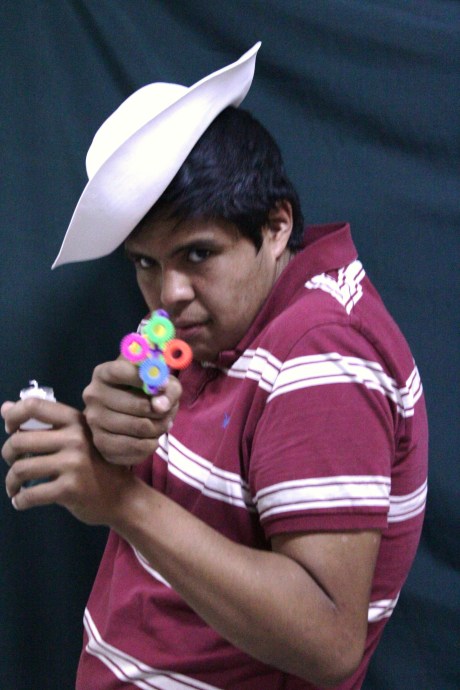
Ariel in fancy dress by Pati, 15. This was the first in house photography session using the SLRs. Dressing up helped the participants to feel under less pressure in front of the camera.
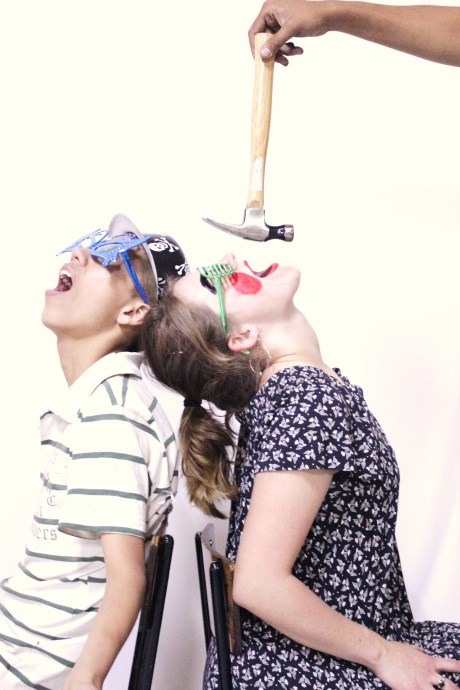
Photograph by Tabatha in the same session. The group was made up of about 20 at this early stage. It was hectic.
“It was our first afternoon in the Sony FotoEscuela studios… I was struggling my way through a broken Spanish speech about apertures, light sensitivity and speed. I observed only one pair of eyes looking at me… The other seven pairs had found better distractions. I was losing control…” (December newsletter)
“We spent a couple of afternoons taking portraits in the Casa Alianza homes…. For this particular session, [Who Am I?] I asked the boys to bring along the item that they thought was most representative of them. Every single one brought his football T-shirt…” (January newsletter)
“In a mere flash I have arrived at a landmark six months of life in Mexico… At times the project has seemed to inch along at an alarmingly snail-like pace, but the past two months have really seen the elements come together…” (January newsletter)
“My dad and my mother divorced when I was 3 years old. Let’s just say that that was when my hell began. My brother would abuse me. They say that children do what they have seen others do or what has been done to them. I’ve always thought that they did to him what he did to me.” (January blog entry)
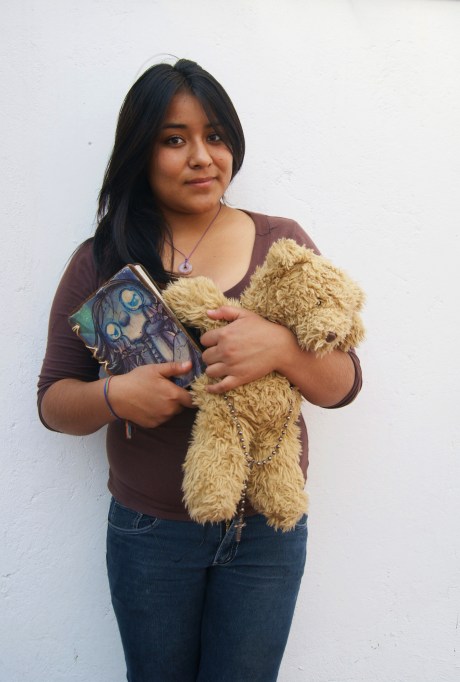
Sheila, 17. As part of a continuing communications project I had planned to do with Sheila, she wrote this blog entry about her life.
“In their presentations they explained why they chose their images. War was chosen because it means arms, and arms mean power, and power is beautiful.”(February newsletter)
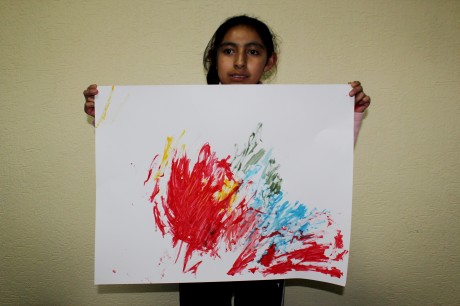
During the final project that we initially based on ‘Beauty’, Mariana holds up her version of a painting I had told them to do which would put “how they felt onto paper”. This was to experiment with motion and colour in images.
“Twenty teenagers in a confined dark space is a recipe for chaos, to say the least…” (February newsletter)
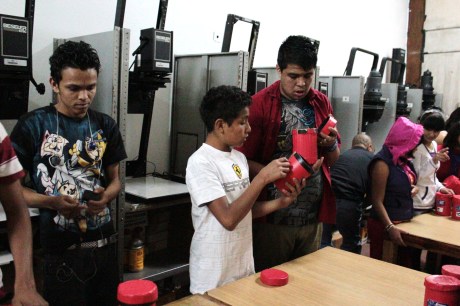
In the dark room of El Centro Cultural de la Imagen where the group learnt to make pin-hole cameras.
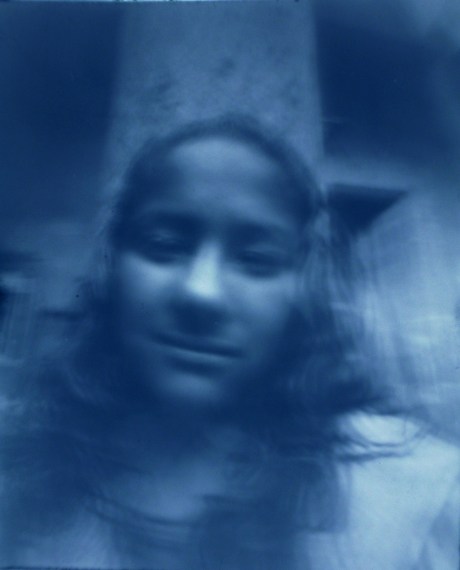
Self Portrait, a successful pin-hole camera photograph; captured, developed and printed by Maria, 14.
“The girls… were spinning, swaying and laughing as if they hadn’t a care in the world.” (March newsletter)
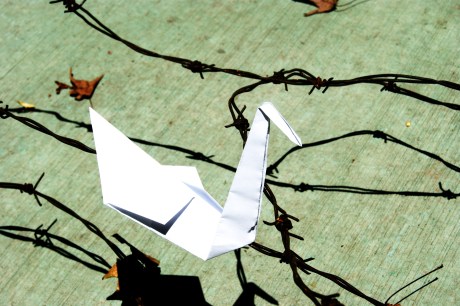
34. Origami Swan, by Claudio, 10. The boys had brought in an object they considered beautiful for the session on aperture. They had made 500 origami swans in aid of Japan.
“It is a title that represents the universal experience of adolescence, possibly the hardest transition made in anyone’s lifetime and something to which we can all relate, whatever our background.” (April newsletter)
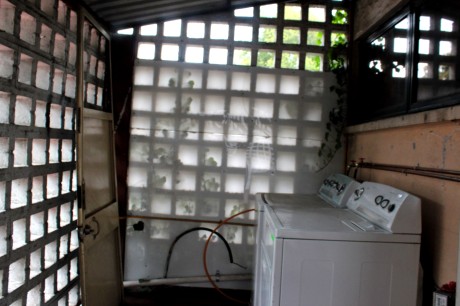
Preparing photos for the final show: A Place of Solitude by Fabiola, 13. Taken in the final weeks of the project on the rooftop of the girls’ home in Mexico City.
Conclusion
“On the evening of the final (outdoor) show, a mere hour before the exhibition was due to open, the skies gave way; Nature took a deep breath and blew over Mexico City a series of tornadoes, the first in all its written history.” (June blog entry)
Perhaps a tornado was the only appropriate way to draw the curtains on the Mexico project. In a poetic sense, no other way would have been quite adequate for what would become a whirlwind of a personal journey.
I hope this catalogue has given you a clearer sense of that journey. Many more parts of the story I omitted: lonely teenage mother, Sandra, crouched beside an empty metro station, burdened by her swollen belly and her glue addiction, feeding a ham sandwich to her seven-year-old son returned from school; the spiritual session in the boys’ home, where for the first time I watched Alejandro and Daniel heaving, rocking, sobbing and begging deliverance to a chipped, plastic Virgin; the four children, Reina, Luis Ángel, Juan Carlos and Francisco, who huddled on a rotten sofa in an open square, awoke to find their shoes stolen whilst they had slept; the boy in the busy plaza of the Insurgentes metro station with his dyed, scruffy yellow hair. I wrote about him:
“He was extremely dirty, his face patchy with black marks and his hands completely black. He teetered about, fist in mouth, mumbling every so often. He seemed so solitary. He must have been about my age.”
I also omitted the innumerable football games, the undefeated patience of the Casa Alianza street educators, the unbroken dedication of the home caretakers and guardians, the insurmountable optimism of the boy prostitutes, and the rock-solid community of the teenagers in and out of the homes.
I wish I could fit it all in for you on these pages. But maybe you have an idea now; maybe now you can see before you that concrete horizon, Mexico City, as it swarms and seethes beneath a smog-green sky. Maybe you can see its people, its young people, stumbling, hustling, dreaming, falling in love, living forgotten lives among the greasy taco stands and fumes of frying cactus and ox tongue.
Maybe I’ve said enough. Let the images tell their own story.

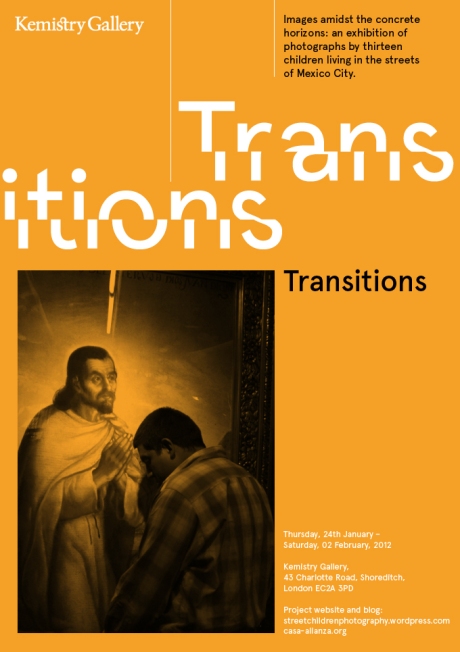
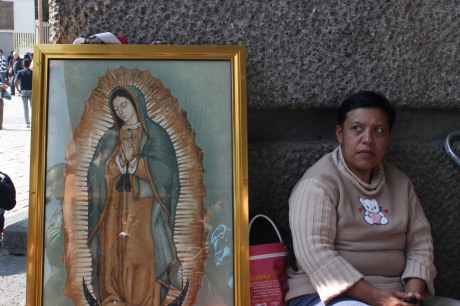
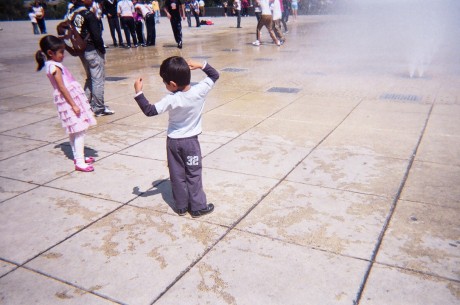
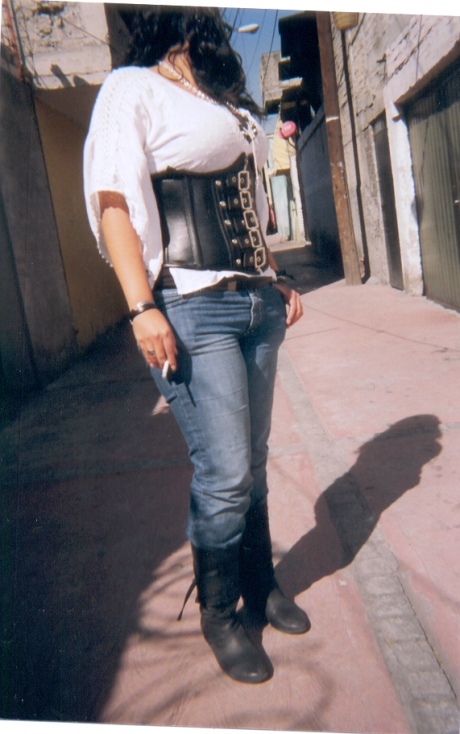
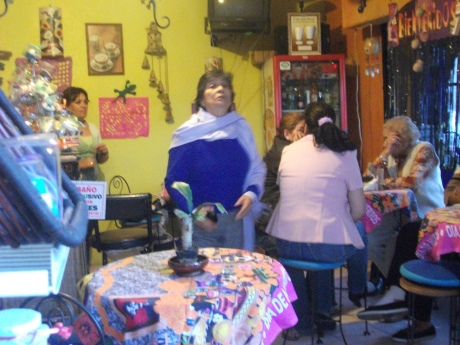
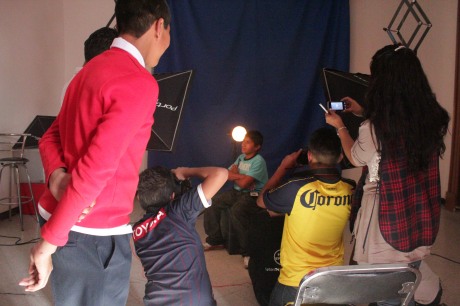
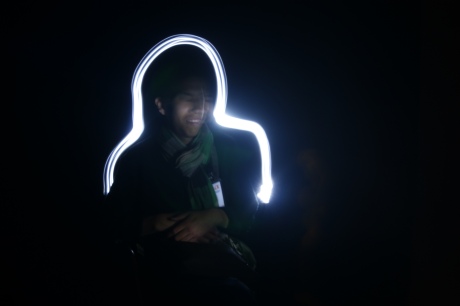
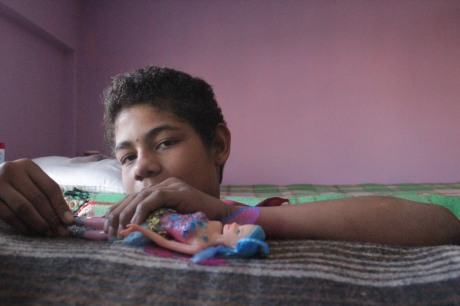
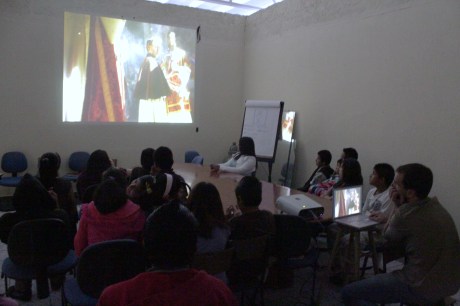
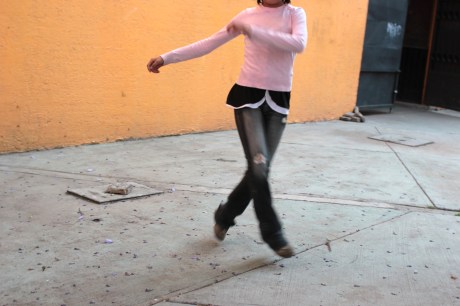
Alessandra – what you achieved in the time available, given the resources you had and the continuous complications you encountered, is astonishing. You’ve helped put a spotlight on the great work of Casa Alianza and the life and condition of the children whose lives they are trying to improve. Well done. We’re incredibly proud of you.
couldn’t agree with you more kenneth… she did an enormous incredible job over there… cheers!
A very interesting and exciting experience. Many congratulations on a fascinating social commentry. Bill Hiscocks.
[…] the fruity, the nutty, the spicy and the sweet, to the outright bitter. As is evident from my Street Children Photography blog, the project had some hairy moments: the teenagers were unpredictable, the NGOs were under […]
What an absolutely fantastic and heartwarming project. I read about your blog from the Liverpool SOCLAS website as I had also done my year abroad in Mexico City. You have inspired me to go back and help in the struggle for social justice that so many in Mexico are fighting. I’m sure that even the children that you never saw again were still impacted by the work you did. Very inspiring, thank you!